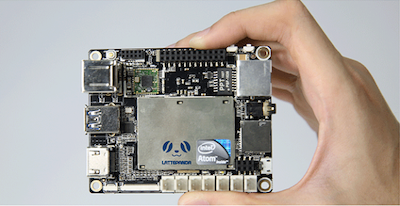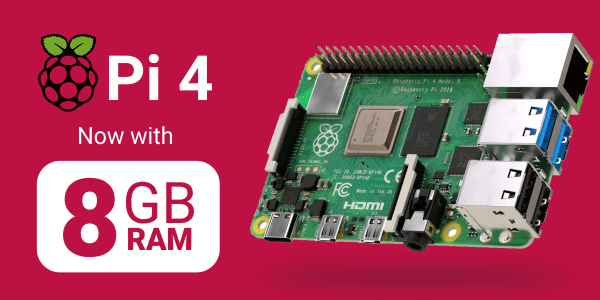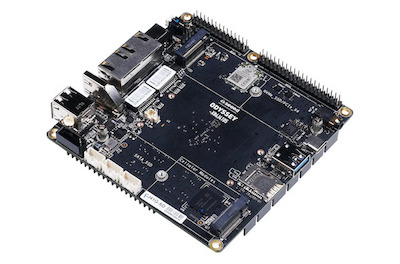Reviews
John Guan - Apr 30, 2023
LattePanda is a single-board computer that was first introduced in 2015. It is designed to be a powerful and versatile mini PC that can run full versions of Windows 10, making it a great option for a range of applications, including programming, gaming, and multimedia tasks. Unlike many other single-board computers, LattePanda has built-in Wi-Fi, Bluetooth, and Ethernet connectivity, as well as HDMI and USB ports, making it easy to connect to a range of devices.
The purpose of this review is to take a closer look at the LattePanda and explore its features, performance, and capabilities. We will examine its hardware specifications, operating system support, and community and support resources, as well as its strengths and weaknesses.
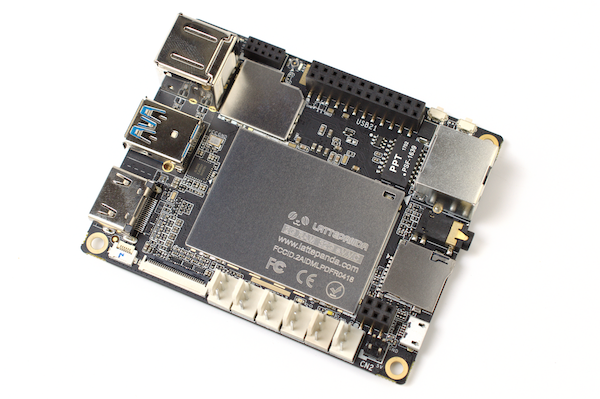
Single-board computers like the LattePanda offer an affordable and compact alternative to traditional desktop and laptop computers. They are ideal for a wide range of projects, from robotics and home automation to gaming and multimedia. However, choosing the right single-board computer is important, as different boards have different strengths and weaknesses, and may be better suited for certain applications than others. By understanding the capabilities of the LattePanda, we can better determine whether it is the right choice for our specific needs.
Part 1: Overview of LattePanda
LattePanda is a single-board computer that was first released in 2015. It was designed to be a compact and powerful computing platform that can run a full version of Windows 10, making it an attractive option for users who need a small form-factor PC that can run Windows applications. In this section, we will provide an overview of the history and background of LattePanda, as well as its key features and specifications.
A. Brief history and background of LattePanda
LattePanda was created by a group of engineers who were looking for a small and powerful computing platform that could run Windows 10. They wanted to create a board that was not only affordable, but also provided enough processing power to handle demanding applications. After months of research and development, the team finally released the first version of LattePanda in 2015.
Since then, LattePanda has become a popular choice for users who need a compact and powerful computing platform. The board has gone through several iterations, with each version offering more features and better performance than the previous one.
B. Key features and specifications
The LattePanda is available in several models, each with different specifications. However, there are some key features that are common to all models:
Processor: The LattePanda is powered by an Intel Atom x5-Z8350 quad-core processor, which runs at a clock speed of 1.44 GHz (1.92 GHz burst frequency). This processor provides enough processing power to handle most Windows applications.
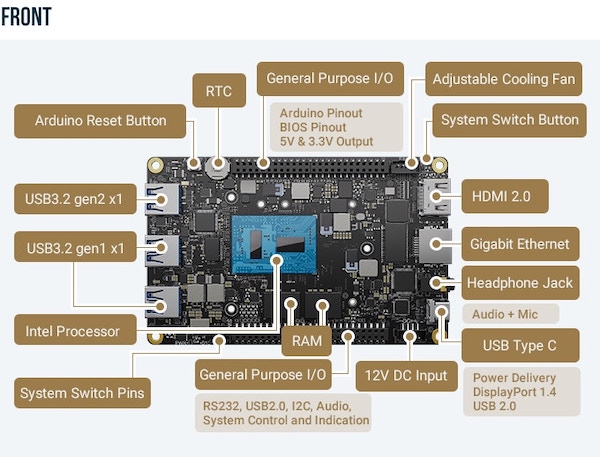
RAM: The board comes with 4 GB of DDR3 RAM, which is enough to run most applications smoothly.
Storage: The LattePanda has a built-in 64 GB eMMC storage, which can be expanded using a microSD card.
Connectivity: The board comes with built-in Wi-Fi and Bluetooth 4.0, as well as a Gigabit Ethernet port.
Ports: The LattePanda features a variety of ports, including USB 3.0, USB 2.0, HDMI, Ethernet, and a 3.5mm audio jack.
Operating system: The LattePanda can run Windows 10 Home or Linux.
C. Available models and price ranges
There are several models of LattePanda available, each with different specifications. The following are the most popular models:
LattePanda Delta: This is the latest model of LattePanda, which was released in 2019. It comes with an Intel Celeron N4100 processor, 4 GB of RAM, and 32 GB eMMC storage. It is priced at around $188.
LattePanda Alpha: This is the most powerful model of LattePanda, which was released in 2018. It comes with an Intel Core m3 processor, 8 GB of RAM, and 64 GB eMMC storage. It is priced at around $399.
LattePanda V1.0: This is the original version of LattePanda, which was released in 2015. It comes with an Intel Atom x5-Z8300 processor, 2 GB of RAM, and 32 GB eMMC storage. It is priced at around $120.
Part 2: Performance and Processing Power
A. CPU and GPU performance comparison
The LattePanda is powered by an Intel Atom x5-Z8350 quad-core processor that operates at a base frequency of 1.44 GHz, with a maximum turbo frequency of 1.92 GHz. This processor is more powerful than the ARM-based processors used in many other single-board computers and provides sufficient processing power for running multiple applications and tasks simultaneously. The processor is also equipped with Intel HD Graphics 400, which provides decent graphics performance for applications that require it.
B. RAM capacity and speed comparison
The LattePanda comes with 4GB of DDR3L RAM, which is standard for most single-board computers. However, it also has a unique feature that sets it apart from other boards – an integrated 64GB eMMC storage module. This module provides faster read and write speeds than standard microSD cards, which are typically used as storage for single-board computers. The combination of 4GB RAM and 64GB eMMC storage makes the LattePanda a capable computing platform for a wide range of applications.
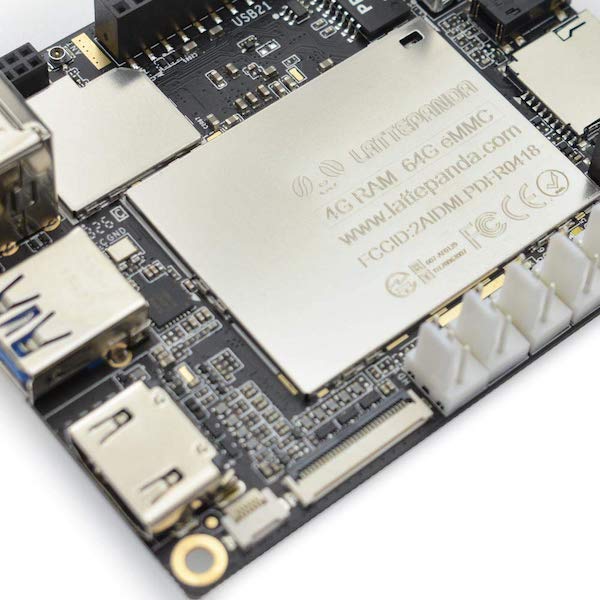
C. Connectivity and storage options
The LattePanda offers a variety of connectivity options, including Gigabit Ethernet, Wi-Fi, Bluetooth 4.0, and USB 3.0. It also features an HDMI port, a 3.5mm audio jack, and a microSD card slot. The board also has a built-in Arduino-compatible co-processor, which allows users to connect and control various sensors, actuators, and other devices. Additionally, the LattePanda has an optional add-on board that provides an additional 2 USB 2.0 ports, a VGA port, and a GPIO header.
One of the most impressive features of the LattePanda is its built-in Arduino co-processor. This allows makers and developers to easily integrate the board with a wide range of sensors, actuators, and other devices. The co-processor is fully compatible with the Arduino IDE, which makes it easy for users to program and control their devices.
Another advantage of the LattePanda is its integrated 64GB eMMC storage module. This provides faster read and write speeds than standard microSD cards, which can be a bottleneck for many single-board computers. The integrated storage also eliminates the need for an external storage device, which can be beneficial for projects that require a compact form factor.
However, the LattePanda is not without its limitations. One of the biggest disadvantages of the board is its price, which is significantly higher than many other single-board computers on the market. Additionally, the LattePanda is not as widely supported as other boards, which may make it difficult for beginners to find resources and tutorials.
Part 3: Operating System Support of LattePanda
A. Available Operating Systems for LattePanda
The LattePanda supports a wide range of operating systems, making it a versatile choice for many different applications. Here are some of the most popular operating systems that are available for LattePanda:
Windows 10 – The LattePanda comes preloaded with Windows 10, which is a great option for those who are already familiar with the operating system. Windows 10 allows for easy access to the Microsoft Store, which provides a wide range of software and tools that can be used with the LattePanda.
Linux – The LattePanda also supports a range of Linux distributions, including Ubuntu, Debian, and Fedora. Linux is a popular choice among developers and makers due to its flexibility and open-source nature.
Android – Android is also a popular operating system for LattePanda, and it can be installed using the Android-x86 project. Android is a great choice for those who want to use the LattePanda for multimedia or gaming applications.
B. Compatibility with Popular Distributions
The LattePanda is compatible with many popular Linux distributions, including Ubuntu, Debian, and Fedora. These distributions have a large community of users and developers, which means that there are plenty of resources available for those who need help getting started or troubleshooting issues.
C. Performance of LattePanda with Different Operating Systems
The performance of the LattePanda varies depending on the operating system that is being used. Windows 10 runs smoothly on the LattePanda, and users should have no issues running basic applications such as web browsers and office suites. However, more demanding applications such as video editing software or games may struggle due to the limited graphics performance.
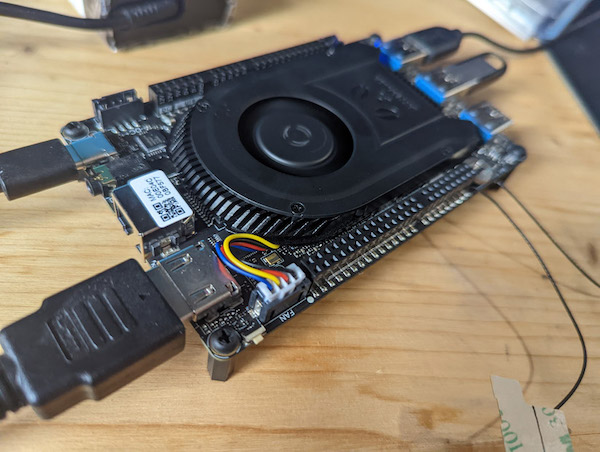
Linux runs well on the LattePanda, and users can expect good performance when running basic applications. However, some users have reported issues with graphics drivers, which can cause problems when running more demanding applications.
Android also runs well on the LattePanda, and users can expect good performance when using the device for multimedia or gaming applications. However, the limited graphics performance may make it difficult to run more demanding games or applications.
Part 4: LattePanda and explore its community and support.
A. Community Size and Activity Level
The LattePanda community has grown significantly since the product’s launch. The official LattePanda forum is a vibrant community that includes members from all over the world. The forum is a great place to ask questions, share ideas, and get help with your LattePanda project. Additionally, there are several LattePanda groups on Facebook, Reddit, and other social media platforms.
The community is very active, and you’ll find members posting new projects and ideas every day. Many community members have shared their projects, tutorials, and code libraries. This means that there is a wealth of resources available for anyone interested in working with the LattePanda.
B. Availability of Support and Documentation
The LattePanda team provides excellent support for their product. The LattePanda website has an extensive support section with detailed tutorials, user guides, and FAQs. Additionally, the team provides email support for any technical issues that you may encounter.
One of the best things about LattePanda is that the team is always adding new features and improving the product. The team actively engages with the community and takes feedback seriously. This means that if you encounter a problem, there’s a good chance that it will be addressed in a future update.
C. Third-Party Accessories and Add-Ons
LattePanda is compatible with a wide range of accessories and add-ons, which makes it an incredibly versatile platform. There are several official LattePanda accessories available, including touchscreens, cases, and expansion boards.
In addition to official accessories, there are also a variety of third-party accessories available. For example, there are several camera modules, motor controllers, and sensors that work with the LattePanda. This means that you can customize your LattePanda to suit your specific needs.
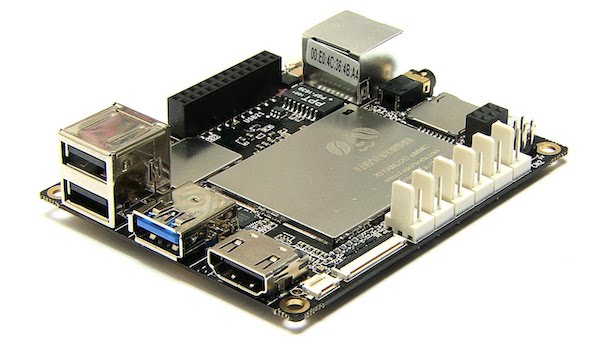
Part 5: Pros and Cons of LattePanda
A. Advantages of using LattePanda
LattePanda is a powerful single-board computer that offers many benefits to its users. Here are some of the advantages of using LattePanda:
High Performance: LattePanda offers high performance with its powerful Intel processors. Its Quad-core 1.8GHz Intel Atom x5-Z8350 processor and 2GB/4GB DDR3 RAM make it ideal for running complex applications and multitasking.
Built-in Arduino Co-processor: LattePanda has a built-in Arduino co-processor that enables it to work with different types of sensors and devices. This feature makes it perfect for projects that require both computing and sensor-based functionalities.
Dual OS Support: LattePanda supports both Windows 10 and Linux operating systems, which gives users the flexibility to choose the OS that suits their needs best.
Multiple Connectivity Options: LattePanda comes with multiple connectivity options such as Wi-Fi, Bluetooth, Ethernet, USB, and HDMI. These options make it easy to connect to various devices and networks.
Compact Design: LattePanda has a compact and portable design, which makes it easy to carry around and use in different locations.
B. Limitations of LattePanda
Despite the many advantages of LattePanda, there are also some limitations to using this single-board computer. Here are some of the limitations:
Limited RAM: The 2GB/4GB DDR3 RAM available on LattePanda may not be sufficient for running some complex applications or multitasking.
Price: LattePanda is relatively expensive compared to other single-board computers on the market. This high price may be a limiting factor for some users, especially hobbyists and students.
Power Consumption: LattePanda consumes more power than some other single-board computers, which may limit its use in some battery-powered projects.
Limited GPIO Pins: LattePanda has a limited number of GPIO pins, which may be a limitation for some projects that require more pins.
Limited Availability: LattePanda is not as widely available as some other single-board computers, which may make it harder to find and purchase.
Part 6: Lattepanda alternative-ZimaBoard single board server
If you’re in the market for a single board computer, the LattePanda is definitely a popular option. However, there are also other great alternatives that offer similar features and performance. One such alternative is theZimaBoard single board server.
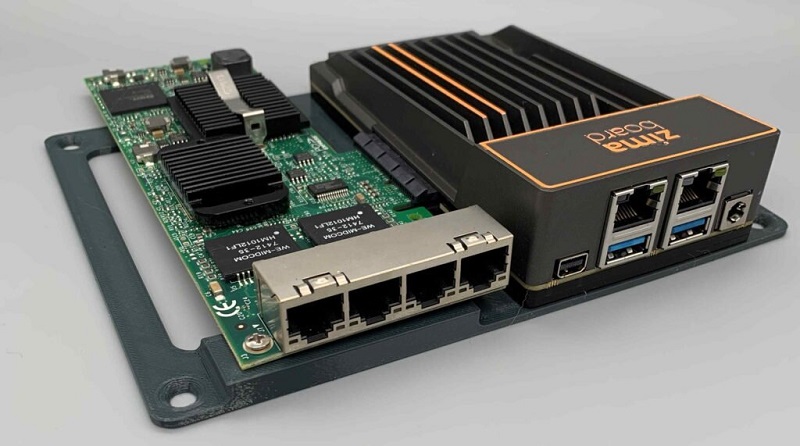
The ZimaBoard is a versatile single board computer that can function as a home server, media center, or IoT gateway. It boasts impressive specifications, including an Intel Celeron processor, up to 8GB of RAM, and multiple networking options.
Like the LattePanda, the ZimaBoard is compatible with various operating systems, including Windows 10 IoT, Ubuntu, and Android. This flexibility allows you to choose an OS that meets your specific needs and preferences.
The ZimaBoard also comes with multiple connectivity options, including Gigabit Ethernet. This makes it ideal for use in various applications, including media centers, IoT gateways, and even robotics projects.
One of the standout features of the ZimaBoard is its size. It is slightly larger than the Raspberry Pi 4 but smaller than the LattePanda. This compact form factor makes it an ideal choice for projects where space is limited.
Another great feature of the ZimaBoard is its ease of use. It comes with an intuitive web-based management interface that allows you to easily configure and manage the board. Additionally, the ZimaBoard community provides excellent support and resources, making it easy to get started with the board and troubleshoot any issues.
While the ZimaBoard offers many advantages over other single board computers, it does have a few limitations. For example, it doesn’t come with a built-in HDMI port, so you’ll need to use an adapter to connect it to a display. Additionally, some users have reported that the board can run hot, especially when running demanding applications.
Final Verdict:
Overall, the ZimaBoard is an excellent alternative to the LattePanda and other popular single board computers. Its compact size, impressive specifications, and easy-to-use management interface make it a great choice for a variety of applications, from media centers to IoT gateways to robotics projects. If you’re looking for a powerful, versatile, and affordable single board computer, the ZimaBoard is definitely worth considering.
